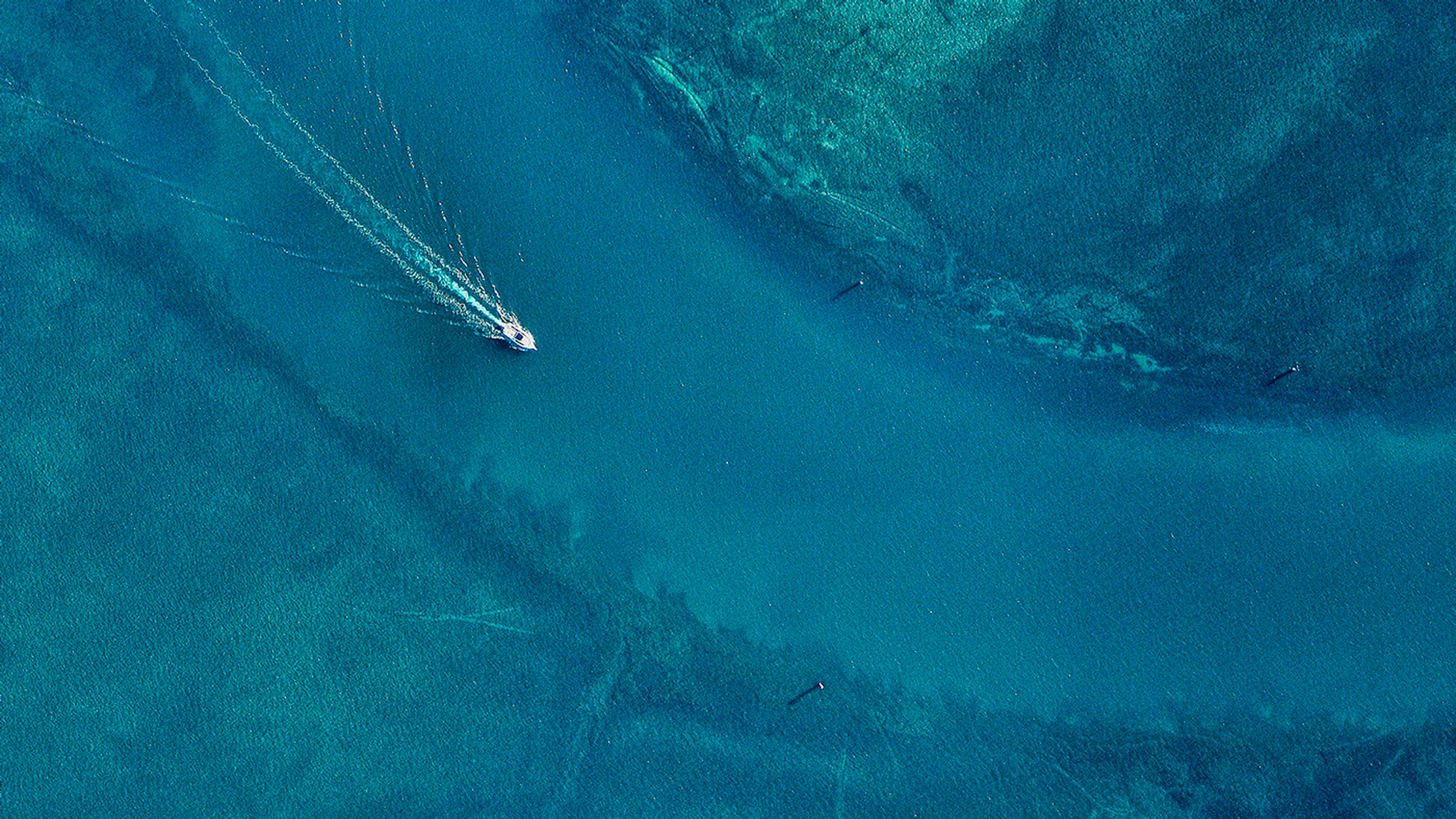
THE CARMIGNAC FIXED INCOME RANGE
Flexibility can make all the difference when navigating the various stages of the economic cycle. At Carmignac, for more than 30 years now, our independence has allowed the freedom to implement a truly active approach, enabling us to seek out investment opportunities wherever they may be. This mindset is fully reflected in our range of fixed income Funds.
A TRULY FLEXIBLE PHILOSOPHY
All of our fixed income Funds share the same approach: an active, global and non-benchmarked investment style relying on high flexibility in managing exposures to different segments of the fixed income universe:

Flexible allocation

Global approach

Non-benchmarked management
This philosophy is framed by disciplined risk management, through both a qualitative and quantitative approach:
- We implement optimised risk management to maintain our long-term performance drivers while deciding whether or not temporarily hedge them based on changes in the risk curve.
- Our management team has various quantitative tools to analyse, control and understand the risks of their portfolios and thus adjust their positioning when necessary.
EXPERTISE COVERING THE ENTIRE FIXED INCOME SPECTRUM
Our range includes differentiated investment solutions, based on our five key areas of expertise:

Low duration approach to European markets

Global approach, hedged against currency risk

Global macro approach

Global credit approach
Accessing the entire credit universe (developed and emerging markets, high yield and investment grade securities, structured credit) through a dedicated range:
- A flexible credit Funds
- Target maturity credit funds

Emerging market debt approach
Benefitting from the potential of emerging fixed income markets through various performance drivers: local debt, external debt and currencies.
Whether through interest rate, credit or currency strategies, within developed or emerging markets, our range of Funds has been created and expanded with time to meet the diverse investor needs, based on their investment objectives.
DISCOVER OUR FIXED INCOME FUNDS
Low duration approach to European markets

- A flexible approach with an active management of modified duration (from -3 to +4).
- Limited exposure to high yield credit securities and an average minimum investment grade rating.
- Disciplined risk management including both financial and extra-financial criteria.
For investors looking for a relatively conservative solution to seize fixed income opportunities in European markets.
Global approach, hedged against currency risk

- A fixed income asset allocation solution combining top-down analysis and bottom-up selection.
- A dynamic modified duration management (from -3 to +8) to benefit from both rising and falling interest rates.
- Disciplined risk management including both financial and extra-financial criteria.
For investors seeking a fixed income allocation solution designed to outperform the bond markets while hedging the currency risk.
Global macro approach

- A global investment universe to identify and harness macroeconomic trends across the world.
- Multiple performance drivers (interest rates, credit and currencies) and a broad modified duration range (from -4 to +10).
- Disciplined risk management involving both financial and extra-financial criteria.
For investors looking for a macroeconomic, global and flexible approach aiming to capitalise on the multiple performance drivers offered by fixed income markets.
Global credit approach
Flexible credit Fund

- Access to the entire credit universe for maximum flexibility.
- In search of the optimal risk-return profile over the entire credit cycle.
- Rigorous stock selection: the opportunities assessed are subject to in-depth analysis.
For investors looking to boost their portfolio with a versatile solution to navigate volatile credit markets.
Target maturity Fund

- A target performance objective and a ****predefined maturity date1.
- A conviction-based investment process to build a diversified portfolio of credit securities rated investment grade, on average.
- Risks that diminish over time and that are managed rigorously.
For investors seeking to benefit from attractive returns within the credit markets through a strategy combining visibility and diversification.
(1) Please refer to the Fund’s prospectus for more information about the investment objective. Under no circumstances does it constitute an undertaking on the yield or performance of the Fund. The Fund carries a risk of capital loss.

- A target performance objective and a predefined maturity date1.
- A conviction-based investment process to build a diversified portfolio of credit securities rated investment grade, on average.
- Risks that diminish over time and that are managed rigorously.
For investors seeking to benefit from attractive returns within the credit markets through a strategy combining visibility and diversification.
(1) Please refer to the Fund’s prospectus for more information about the investment objective. Under no circumstances does it constitute an undertaking on the yield or performance of the Fund. The Fund carries a risk of capital loss.

- An early redemption option if the Fund has achieved or exceeded a performance deemed appropriate1.
- A conviction-based investment process to build a diversified portfolio of credit securities.
- Risks that diminish over time and that are managed rigorously.
For investors seeking to benefit from attractive returns within the credit markets through a strategy combining visibility and diversification.
(1) Please refer to the Fund’s prospectus for more information about the investment objective. Under no circumstances does it constitute an undertaking on the yield or performance of the Fund. The Fund carries a risk of capital loss.
Emerging market debt approach

- Access to multiple performance drivers within emerging fixed income markets.
- A conviction-driven, non-benchmarked approach to unearth attractive opportunities across emerging markets.
- An investment process combining top-down, bottom-up and ESG (Environmental, Social and Governance criteria) analyses.
For investors looking for higher yields by taking advantage of the potential of emerging fixed income markets with risk management adapted to this universe.
Our approach to sustainable bond investing
At Carmignac, we think that it is key to integrate Environmental, Social and Governance (ESG) criteria into the monitoring of sovereign bonds as these are globally dominant in asset allocation. While external solutions are slowly being developed, we have chosen to build our own proprietary models in order to ensure ESG integration and to provide material information to our investors. Two models have been developed in the last years:
- A global sovereign ESG risk model, which aims to assess ESG risks faced by developed and emerging countries
- An emerging markets-focused model that aims to identify positive ESG trajectories.
PROVEN EXPERTISE
Since company’s inception in 1989, our fixed income management team has grown year after year. Today, it is composed of experienced managers and analysts covering a wide range of strategies, regions and asset classes.
Our Funds are therefore able to draw on the team’s overall expertise as well as the complementary know-how offered by each of its members in all segments of the fixed income universe: global fixed income, European fixed income, credit and emerging markets. Our Fund managers and analysts work hand in hand to build optimal asset allocation strategies to suit each portfolio’s distinct risk/return profile.
LIBRARY – FINANCIAL EDUCATION

Target maturity bond funds in the spotlight

Carmignac named Fixed Income Fund Manager of the Year at the Funds Europe Awards 2025
Our other range pages
EQUITY STRATEGIES
DIVERSIFIED STRATEGIES
ALTERNATIVE STRATEGIES
Carmignac Sécurité AW EUR Acc
- Recommended minimum investment horizon
- 2 years
- Risk indicator*
- 2/7
- SFDR - Fund Classification**
- Article 8
*Risk Scale from the KID (Key Information Document). Risk 1 does not mean a risk-free investment. This indicator may change over time. **The Sustainable Finance Disclosure Regulation (SFDR) 2019/2088 is a European regulation that requires asset managers to classify their funds as either 'Article 8' funds, which promote environmental and social characteristics, 'Article 9' funds, which make sustainable investments with measurable objectives, or 'Article 6' funds, which do not necessarily have a sustainability objective. For more information please refer to https://eur-lex.europa.eu/eli/reg/2019/2088/oj.
Main risks of the fund
Carmignac Portfolio Flexible Bond A EUR Acc
- Recommended minimum investment horizon
- 3 years
- Risk indicator*
- 2/7
- SFDR - Fund Classification**
- Article 8
*Risk Scale from the KID (Key Information Document). Risk 1 does not mean a risk-free investment. This indicator may change over time. **The Sustainable Finance Disclosure Regulation (SFDR) 2019/2088 is a European regulation that requires asset managers to classify their funds as either 'Article 8' funds, which promote environmental and social characteristics, 'Article 9' funds, which make sustainable investments with measurable objectives, or 'Article 6' funds, which do not necessarily have a sustainability objective. For more information please refer to https://eur-lex.europa.eu/eli/reg/2019/2088/oj.
Main risks of the fund
Carmignac Portfolio Global Bond A EUR Acc
- Recommended minimum investment horizon
- 3 years
- Risk indicator*
- 2/7
- SFDR - Fund Classification**
- Article 8
*Risk Scale from the KID (Key Information Document). Risk 1 does not mean a risk-free investment. This indicator may change over time. **The Sustainable Finance Disclosure Regulation (SFDR) 2019/2088 is a European regulation that requires asset managers to classify their funds as either 'Article 8' funds, which promote environmental and social characteristics, 'Article 9' funds, which make sustainable investments with measurable objectives, or 'Article 6' funds, which do not necessarily have a sustainability objective. For more information please refer to https://eur-lex.europa.eu/eli/reg/2019/2088/oj.
Main risks of the fund
Carmignac Portfolio Credit A EUR Acc
- Recommended minimum investment horizon
- 3 years
- Risk indicator*
- 2/7
- SFDR - Fund Classification**
- Article 6
*Risk Scale from the KID (Key Information Document). Risk 1 does not mean a risk-free investment. This indicator may change over time. **The Sustainable Finance Disclosure Regulation (SFDR) 2019/2088 is a European regulation that requires asset managers to classify their funds as either 'Article 8' funds, which promote environmental and social characteristics, 'Article 9' funds, which make sustainable investments with measurable objectives, or 'Article 6' funds, which do not necessarily have a sustainability objective. For more information please refer to https://eur-lex.europa.eu/eli/reg/2019/2088/oj.
Main risks of the fund
Carmignac Credit 2031 A EUR Acc
- Recommended minimum investment horizon
- From the launch date to the maturity date, i.e. 31 October 2031.
- Risk indicator*
- 2/7
- SFDR - Fund Classification**
- Article 8
*Risk Scale from the KID (Key Information Document). Risk 1 does not mean a risk-free investment. This indicator may change over time. **The Sustainable Finance Disclosure Regulation (SFDR) 2019/2088 is a European regulation that requires asset managers to classify their funds as either 'Article 8' funds, which promote environmental and social characteristics, 'Article 9' funds, which make sustainable investments with measurable objectives, or 'Article 6' funds, which do not necessarily have a sustainability objective. For more information please refer to https://eur-lex.europa.eu/eli/reg/2019/2088/oj.
Main risks of the fund
Carmignac Credit 2029 A EUR Acc
- Recommended minimum investment horizon
- 5 years
- Risk indicator*
- 2/7
- SFDR - Fund Classification**
- Article 8
*Risk Scale from the KID (Key Information Document). Risk 1 does not mean a risk-free investment. This indicator may change over time. **The Sustainable Finance Disclosure Regulation (SFDR) 2019/2088 is a European regulation that requires asset managers to classify their funds as either 'Article 8' funds, which promote environmental and social characteristics, 'Article 9' funds, which make sustainable investments with measurable objectives, or 'Article 6' funds, which do not necessarily have a sustainability objective. For more information please refer to https://eur-lex.europa.eu/eli/reg/2019/2088/oj.
Main risks of the fund
Carmignac Credit 2027 A EUR Acc
- Recommended minimum investment horizon
- 5 years
- Risk indicator*
- 2/7
- SFDR - Fund Classification**
- Article 8
*Risk Scale from the KID (Key Information Document). Risk 1 does not mean a risk-free investment. This indicator may change over time. **The Sustainable Finance Disclosure Regulation (SFDR) 2019/2088 is a European regulation that requires asset managers to classify their funds as either 'Article 8' funds, which promote environmental and social characteristics, 'Article 9' funds, which make sustainable investments with measurable objectives, or 'Article 6' funds, which do not necessarily have a sustainability objective. For more information please refer to https://eur-lex.europa.eu/eli/reg/2019/2088/oj.
Main risks of the fund
Carmignac Portfolio EM Debt A EUR Acc
- Recommended minimum investment horizon
- 3 years
- Risk indicator*
- 3/7
- SFDR - Fund Classification**
- Article 8
*Risk Scale from the KID (Key Information Document). Risk 1 does not mean a risk-free investment. This indicator may change over time. **The Sustainable Finance Disclosure Regulation (SFDR) 2019/2088 is a European regulation that requires asset managers to classify their funds as either 'Article 8' funds, which promote environmental and social characteristics, 'Article 9' funds, which make sustainable investments with measurable objectives, or 'Article 6' funds, which do not necessarily have a sustainability objective. For more information please refer to https://eur-lex.europa.eu/eli/reg/2019/2088/oj.
Main risks of the fund
This document may not be reproduced, in whole or in part, without prior authorisation from the management company. It does not constitute a subscription offer, nor does it constitute investment advice. The information contained in this document may be partial information and may be modified without prior notice. The Management Company can cease promotion in your country anytime. Investors have access to a summary of their rights in French, English, German, Dutch, Spanish, Italian on the following link (paragraph 6): https://www.carmignac.com/en_US/article-page/regulatory-information-1788. The Sustainable Finance Disclosure Regulation (SFDR) 2019/2088 is a European regulation that requires asset managers to classify their funds as either 'Article 8' funds, which promote environmental and social characteristics, 'Article 9' funds, which make sustainable investments with measurable objectives, or 'Article 6' funds, which do not necessarily have a sustainability objective. For more information please refer to https://eur-lex.europa.eu/eli/reg/2019/2088/oj. The reference to a ranking or prize, is no guarantee of the future results of the UCITS or the manager. The decision to invest in the promoted funds should take into account all their characteristics or objectives as described in their prospectus. Reference to certain securities and financial instruments is for illustrative purposes to highlight stocks that are or have been included in the portfolios of funds in the Carmignac range. This is not intended to promote direct investment in those instruments, nor does it constitute investment advice. The Management Company is not subject to prohibition on trading in these instruments prior to issuing any communication. The portfolios of Carmignac funds may change without previous notice. The Funds are common funds in contractual form (FCP) conforming to the UCITS Directive under French law. Carmignac Portfolio refers to the sub-funds of Carmignac Portfolio SICAV, an investment company under Luxembourg law, conforming to the UCITS Directive. Past performance is not necessarily indicative of future performance. Performances are net of fees (excluding possible entrance fees charged by the distributor). The return may increase or decrease as a result of currency fluctuations. Access to the Funds may be subject to restrictions with regard to certain persons or countries. The Funds may not be offered or sold, directly or indirectly, for the benefit or on behalf of a U.S. person, according to the definition of the US Regulation S and/or FATCA. The Funds present a risk of loss of capital. The risk, fees and ongoing charges are described in the KIDs (Key Information Document). The Funds' respective prospectuses, KIDs, NAV and annual reports are available at www.carmignac.com, or upon request to the Management Company. The KIDs must be made available to the subscriber prior to subscription. • In Switzerland, the Fund’s respective prospectuses, KIDs and annual reports are available at www.carmignac.ch, or through our representative in Switzerland, CACEIS (Switzerland), S.A., Route de Signy 35, CH-1260 Nyon. The paying agent is CACEIS Bank, Montrouge, succursale de Nyon/Suisse, Route de Signy 35, 1260 Nyon. The KID must be made available to the subscriber prior to subscription.
